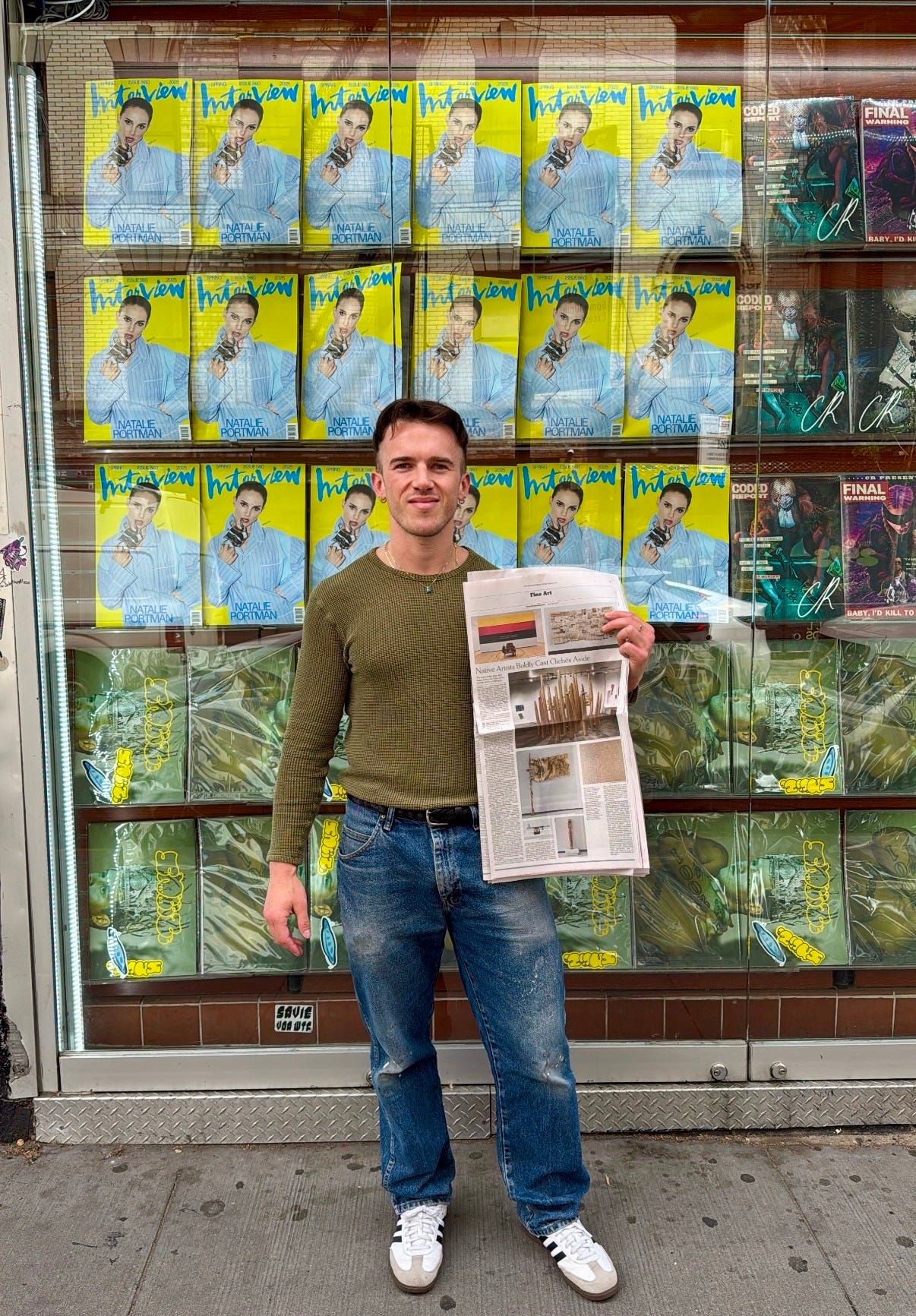I know it’s been crickets over here, but here I am—give me your attention. ;)
Here’s a peak behind the curtain from the past few frenetic months:
Yesterday, my first New York Times exhibition review went into print! The culmination of a circuitous—and if I’m honest, fairly unfocused—dream. I first imagined writing for the Times as a closeted gay kid alongside my best friend Lily. Her family was from New York, and she visited every summer—leaving me selfishly lonely for months. Still, we’d fantasized about futures in the city: me, a writer; her, a lawyer. She did actually intern here during college (something involving 9/11, I never really understood), and though life had other plans—she’s in the Bay now, and I’ve been here for three years—we’ve somehow ended up watering that little seed we planted twenty years ago.
Cut to Fall 2023, I began pitching a pretty pointed critique about the lack of institutional support for Native fashion brands. I sent this idea to over one-hundred editors—gatekeepers of culture, influence, taste. Not one said yes. The silence wasn’t surprising, exactly—just familiar. It wasn’t a smoke signal, but a smoke screen whose opacity concealed whatever arbitrary criteria, infinite tendrils of coolness—ephemeral, yet with a stench that clings with judgment. Despite my critique of the unattainable art world, I was the one being hazed: it works one way—they can see me, but I can never see them.
I figured if I couldn’t get past the gatekeepers, I’d just loiter meaningfully near the gate.
In the meantime, I reinvigorated a commitment I made when I stopped drinking in 2019 to ritualize connecting with the arts. On an early evening in late 2024, I dropped by James Fuentes Gallery’s then Lower East Side location, and met the unfettered Navajo weaver Tyrrell Tapaha at his group show. His tapestries, embellished with Grindr chats and “FUCK“ rejuvenated an earlier, wannabe contemporary Native artist, version of myself who couldn’t access his own culture—and there we both were, old and new, stunned by joy.
“I don’t need to wait for others to join me to do the things that bring me joy,” Lady Gaga said in an interview. At sundry moments in my life, though, I couldn’t accept this.
There was a time when textiles, knitting especially, was a balm, delivering both calm and delight in the relative chaos of a childhood home teeming with ‘trowma’ and mental disarray. Writing is for me textiles 2.0.
In Spring of 2024, I pitched a feature on Tapaha and his salacious works which was accepted by an editor at Art in America.
Although this editor never said it outright, the red slashes through my drafts shared a through line: I was still teaching, still starting with the history of Native life before the art. That didactic impulse comes from being asked, constantly, what my name means. I took the feedback seriously—then heard it again from two more editors. Old habits die hard, even at 29.
In September, my story was printed in the New Talent issue of Art in America, and I had the tropic pleasure of being a New Yorker inviting my visiting family to a gilded issue launch party at the W Hotel. After, I pictured myself quickly devolving into the type Bethenny Frankel derided for RSVPing to the opening of an envelope.
I began receiving PR emails that began with “Hi Petala—My name is “x,” and I’m a big fan of your work,” as if I had some grand oeuvre. Quite the opposite, I had one single published piece of writing. The flattery worked none the less, and I reviewed a few group shows and exhibitions for Artnet, The Observer, and Hyperallergic at their behest.
As pieces were confirmed, written, edited, and published, the high wore off exponentially faster with each clip. One day, in an interview, my guest described me as “prolific.” Momentarily, I was at once aghast and exalted. But at lightning speed, an oppressive feeling struck me, putting together my two or three stories per month—on top of my tech day job—will be a new way of living, and a high bar to perpetually clear. Yet, the rhythm of writing reached equilibrium, somehow. Then this happened: a 976 word story in the New York Times: what a jolt! It didn’t solve anything, but it did something better—it made me feel less invisible.
The whole experience has given me many lessons, chief among them (no pun intended): how Times editors wield punctuation like scalpels, teaching me the art of terseness.




